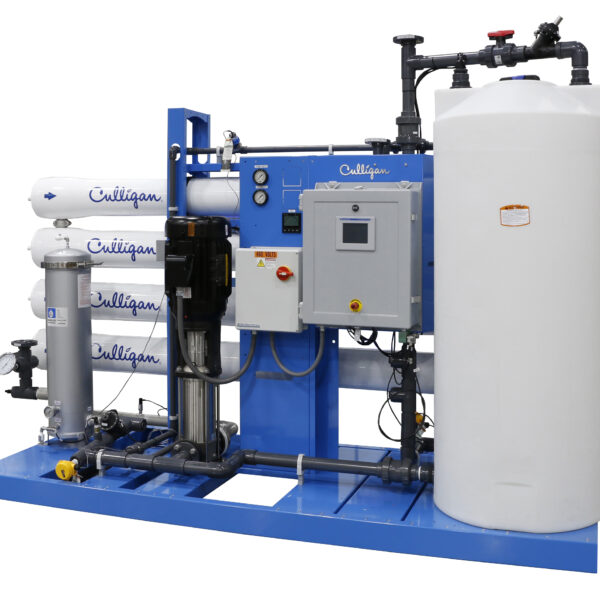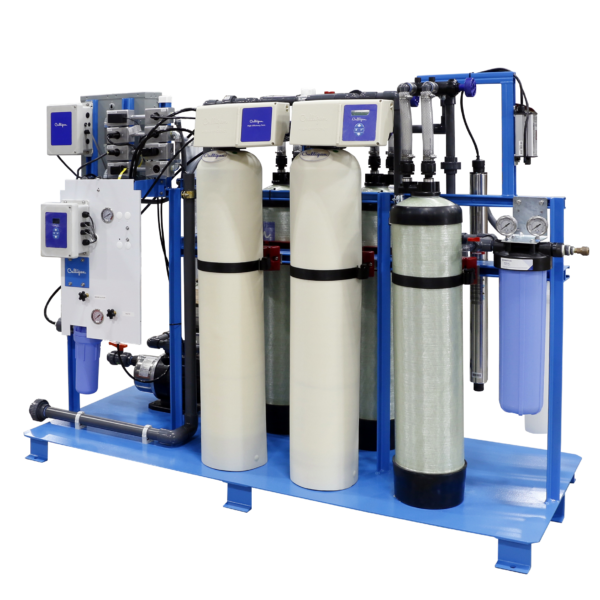- Customer:
- Chemicals/Energy Company
- Description of Business:
- A large chemical manufacturer
- Challenge:
- The manufacturer was challenged with boiler tube failures in its power plant, resulting in costly repairs and downtime
- Solution:
- Reverse Osmosis (RO) for boiler treatment
- Result:
- Six-figure annual savings with less than a two-year payback period
A large chemical manufacturer was challenged with boiler tube failures in its power plant, resulting in costly repairs and downtime. The boiler tube failures were a result of the incoming water quality to the power plant. Until recently, the boiler make-up water was treated with a combination of carbon media filtration and softening. As a result, less than 50% of condensate was returned, and the power boiler ran at 7 feed water cycles.

A local Culligan dealer was asked to review the facility’s needs and provide make-up water treatment alternatives to address the challenges faced at the facility.
The local dealer conducted a site survey of the facility, collected appropriate data from the customer, performed Silt Density Index tests, collected water samples for analysis, and worked with Culligan’s applications engineering team to provide a comprehensive water treatment solution.
Benefits of Culligan Boiler Water Treatment Solutions
After a thorough data review, Culligan recommended utilizing a reverse osmosis (RO) system to treat boiler make-up water. The RO would significantly improve the water quality, allowing the customer to reduce the boiler blowdown rate from 14% to 2%. Due to the reduction in boiler blowdown and resulting chemical savings, the customer would realize a savings of approximately $200,000 per year. The payback period for this project would be approximately 1.5 years.
Inside Culligan’s Solution To The Chemical Power Plant Boiler Treatment Problem
Culligan’s innovative solution resulted in a significant return on investment. Consulting with the customer and utilizing Culligan’s discovery process, the final solution involved repurposing existing equipment, adding a chemical feed system, RO, storage tank, level controls and a re-pressurization pump skid.
The existing carbon media filter was being used to pre-treat the feed water to the RO. The media filter reduces chlorine which can affect the performance of RO membranes.
The first new component is a chemical feed system, which will feed an anti-scalant to reduce scale causing minerals. Furthermore, the anti-scalant promotes efficient performance of the newly added RO.
The second new component is a Culligan® 175 gpm Industrial G3 reverse osmosis systems from the Culligan® Industrial Solutions. The RO systems will reduce total dissolved solids (TDS) in the make-up water.
The softener was repurposed and is now used to polish the RO product water reducing any hardness passing through the RO membranes. The third new component is the RO product water storage tank with level controls and re-pressurization pumps to feed the boiler.




